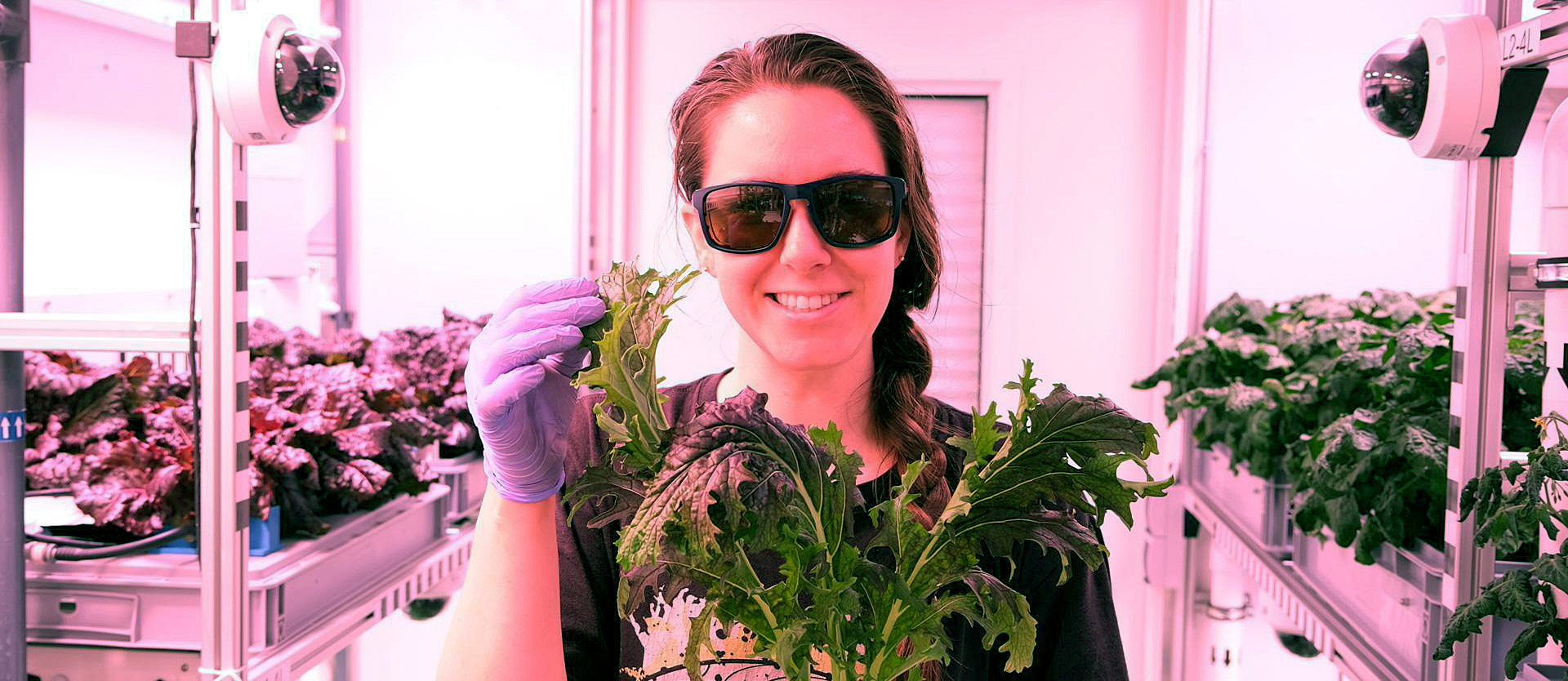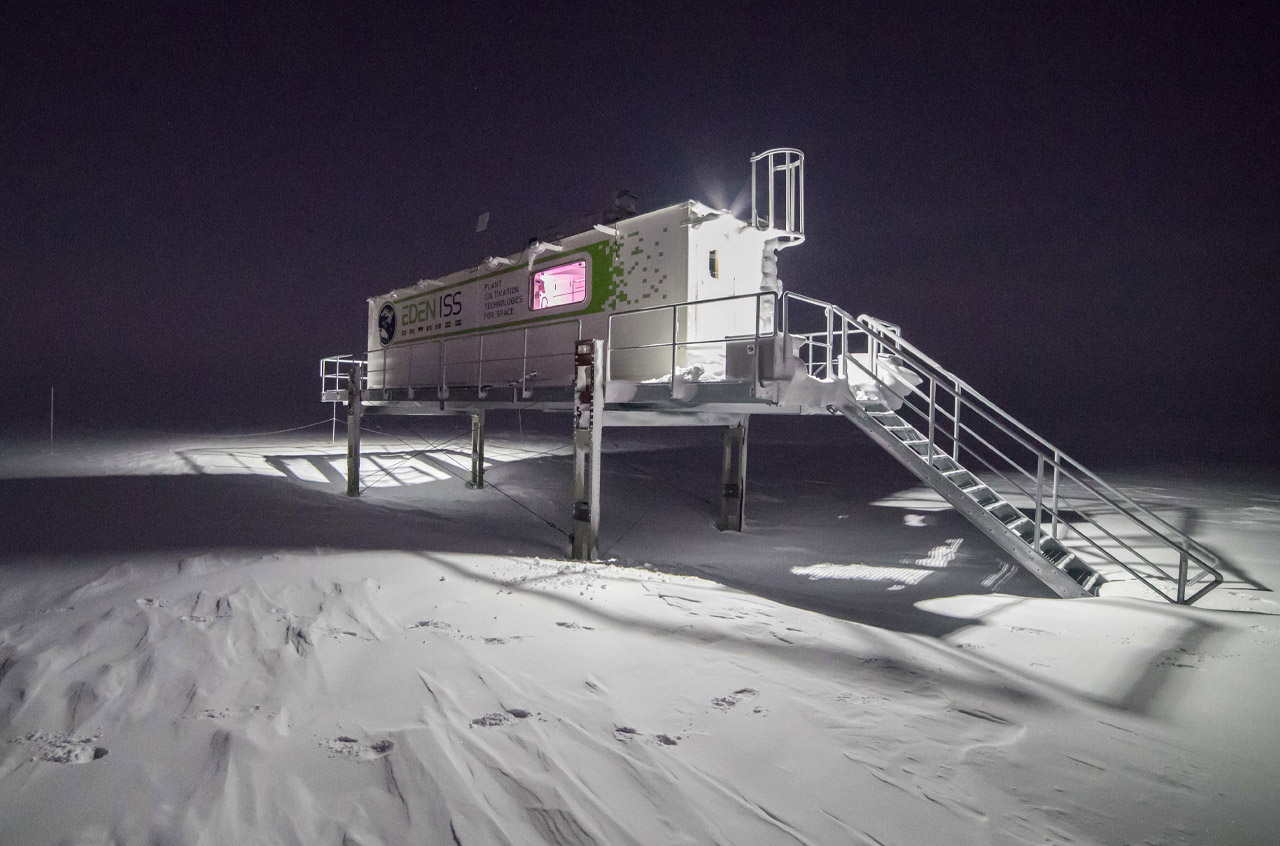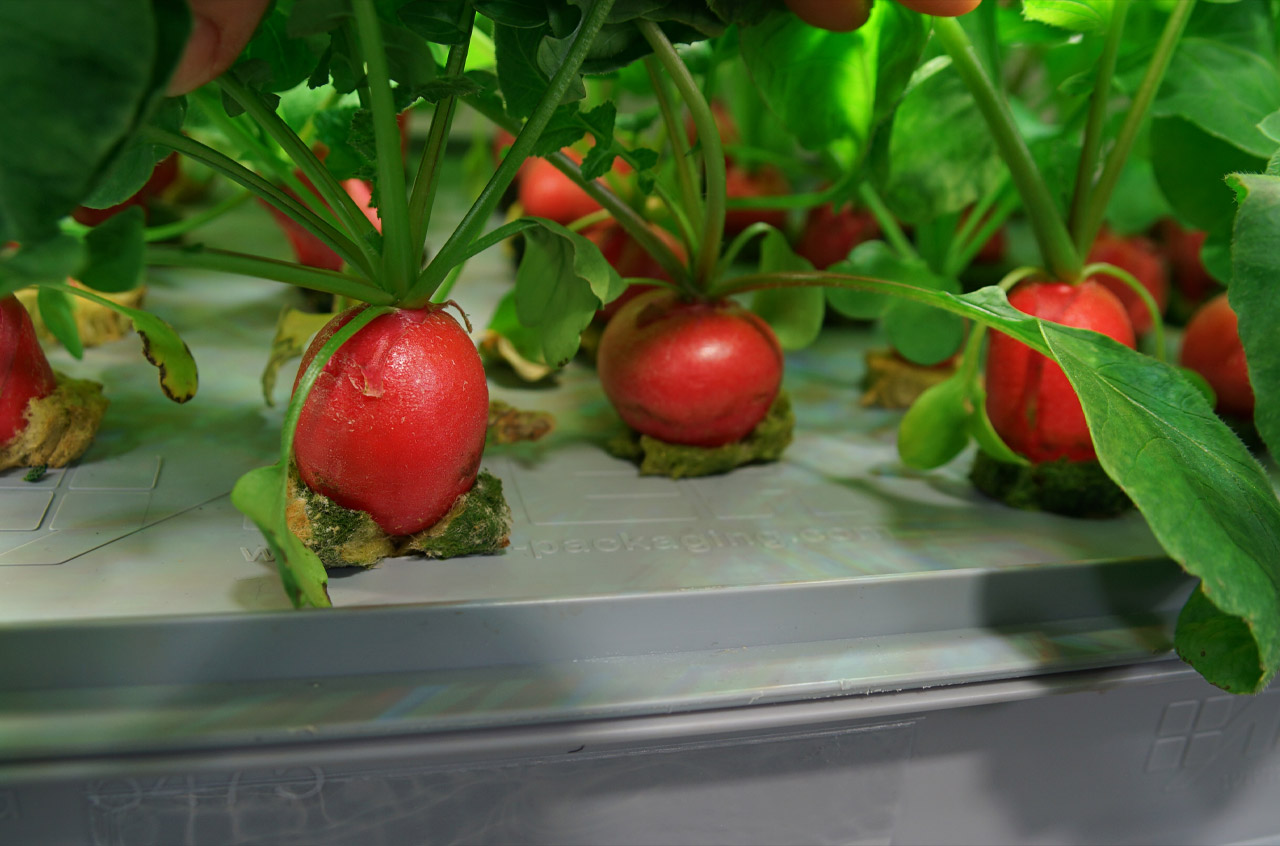
Tomatoes from the ice

From the eternal ice to the eternal expanse
In the middle of Antarctica, it's greening. What sounds like "fake news" is reality and has a forward-looking significance. Because near the Alfred Wegener Institute's (AWI) Neumayer III Antarctic Station, the EDEN ISS greenhouse has been standing since 2018. In the polar night, tomatoes, peppers, lettuces and herbs, among others, thrive there with the help of artificial light, effective nutrient solutions, but completely without soil. The focus is on growing plants that have a high water content and cannot be stored for long.

Der Garten Eden in der Kälte: Das Gewächshaus EDEN ISS im antarktischen Einsatz. Foto: DLR/NASA/Bunchek
For the operation, plant scientist Jess Bunchek from the Kennedy Space Center of the U.S. space agency NASA was a guest researcher in the ice last year. In the joint mission of DLR and NASA, she explored how astronauts can grow lettuce, cucumbers, tomatoes, peppers and herbs using as little time and energy as possible and put greenhouse technology to the test. She also recorded how the green habitat and its fruits affect the isolated hibernation crew in perpetual ice.

Was braucht es noch für ein zünftige Brotzeit? Radieschen gibt es dafür schon einmal im Ewigen Eis. Foto: DLR












